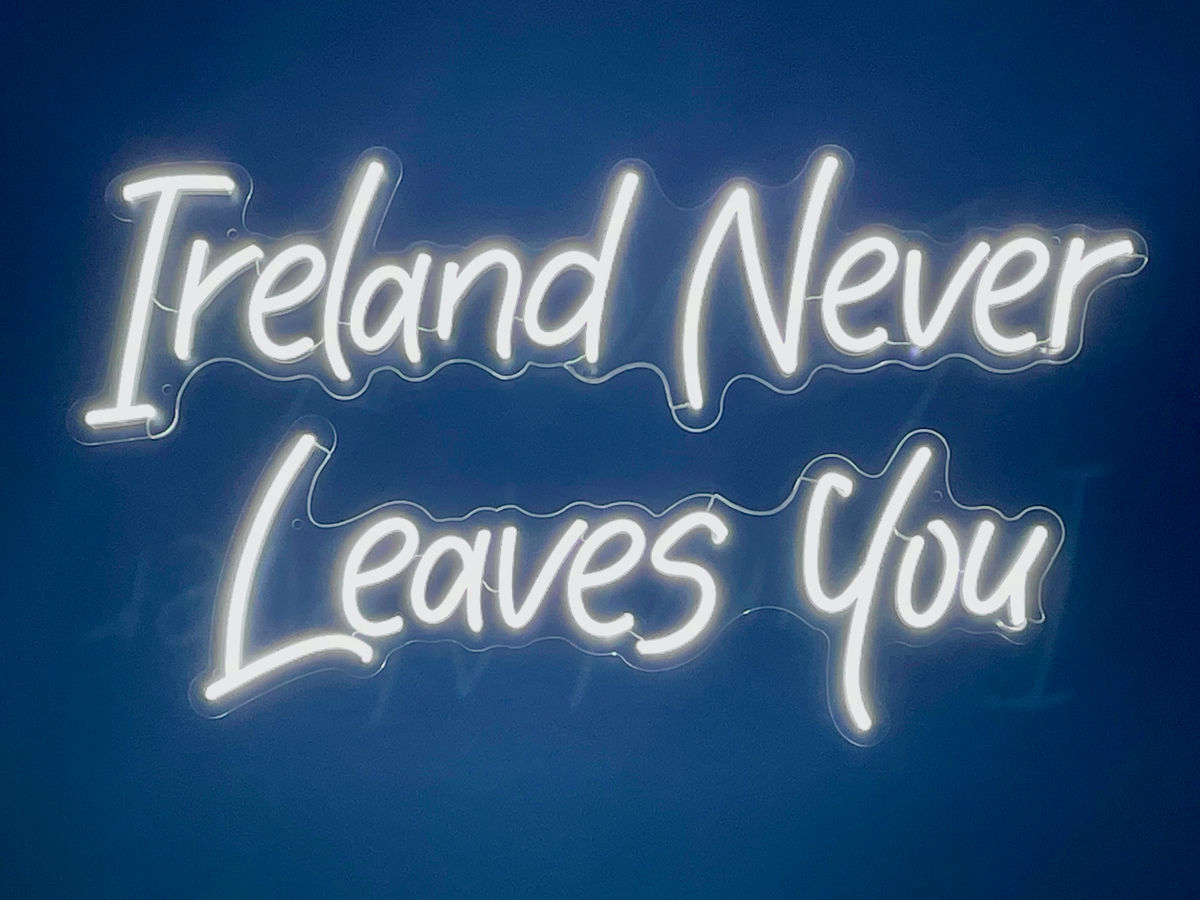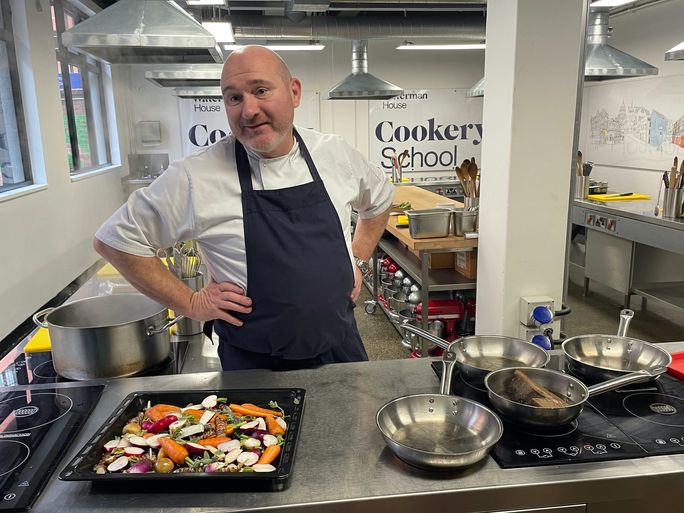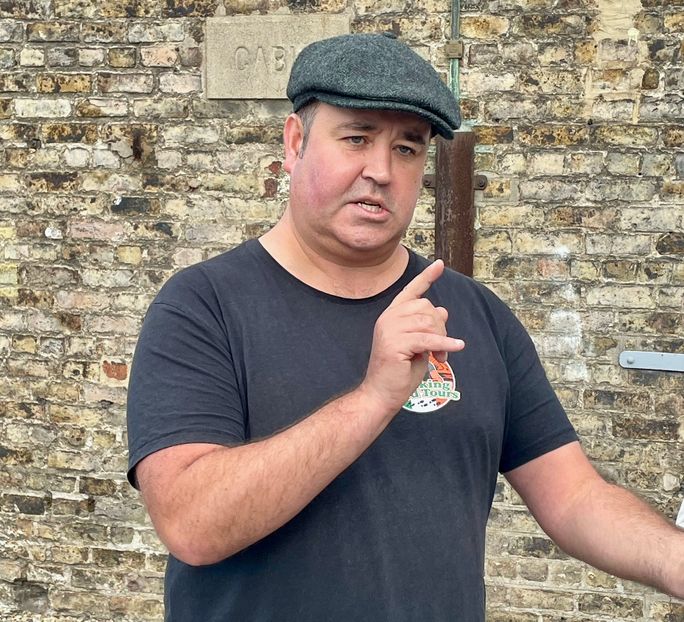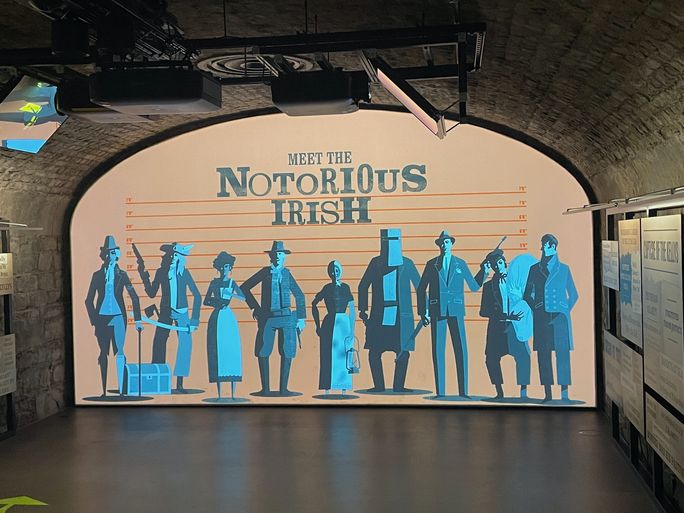


Ireland gets better with every visit.
My most recent trip – my fourth over three decades — was anchored by the Air Canada/United Airlines Race, an annual travel advisor-focused event that moves to a new location each year. For 2024, Tourism Ireland won the bid, and our select group of 15 Canadian and 15 U.S. advisors found out why, during a whirlwind week of food, drink, music, stories and fun.

Members of the winning team pose with Dublin daughter Molly Malone. (Photo Credit: Tourism Ireland)
After race day, when teams of advisors ran around Dublin answering questions and doing silly things for points and prizes, a second 24 hours in the Irish capital saw participants engage in speed-dating with 60 different Irish tourism suppliers. The next morning we divided into four groups, each heading off into one of Ireland’s regions for a three-day deep-dive.
The four trips were: Ireland’s Ancient East; The Wild Atlantic Way; Ireland’s Hidden Heartlands; and Northern Ireland, the tour I was lucky enough to join. I have some skin in the game there – my mother’s parents were Belfast-born – and it was thrilling to see firsthand how a growing sense of optimism and the benefits of a lasting peace have resulted in no-go areas now becoming places to be.

Chef Niall McKenna at Belfast’s Waterman House Cookery School. (Photo Credit: Bruce Parkinson)
From our guides and drivers to the hoteliers, restaurateurs and small tourism business owners who welcomed us, Ireland’s level of hospitality was as good as it gets. There’s a strong pride in their homeland and all it has to offer, and the humour of the Irish and their love of conversation makes them convivial hosts.
It wasn’t until I was going through the nearly 500 pictures I took when it really began to sink in how much we saw, ate, drank and did during the trip. Here are some of my observations on why Ireland makes such an attractive tourism destination for a wide range of clients.
Please Pass The Butter
There are many outdated or just-plain-wrong stereotypes about Ireland. One is that the food is bland and overly focused on potatoes. Perhaps in the past, but my consumption during the week included beef, lamb, chicken, pork, mussels, crab, prawns, duck, fish and a wide range of fresh vegetables. It was the quality of the ingredients – much of them locally sourced – that truly stood out.

We didn’t say that no potatoes were served! (Photo Credit: Bruce Parkinson)
The fact that I had a full Irish fry-up nearly every day for breakfast was my problem, not the Irish. There were many healthy choices. I just made questionable but delicious ones. And while it may seem mundane, Ireland’s delicious brown soda breads and ultra-creamy butter were literally a trip highlight for many of our group. For the first time in my life I skipped the booze aisle and bought a pound of butter and a loaf of bread at an airport duty-free shop.

Kevin Adams created Dublin’s Walking Food Tours during COVID. Now tourists are eating them up. (Photo Credit: Bruce Parkinson)
Another consuming highlight was the Food On Foot tour from Dublin’s Walking Food Tours. Former Guinness employee Kevin Adams started the company as a COVID project, introducing locals to shining examples of Dublin food and drink. Now visitors are eating up the tours. Ours focused on street food, with five savoury and sweet stops in The Liberties, a centuries-old working class neighbourhood.
I’ll Drink To That, & That, & That
There’s another Irish stereotype: that it’s a country full of drunks. Nonsense. Like me, they’re not drunk, they’re just drinking. And Irish drink is a noteworthy story these days. Sales of Irish whiskey have soared over the past decade, and the number of distilleries have quadrupled to 40 in recent years, with many more in various stages of development.
We toured Teeling, the first new Irish whiskey distillery in Dublin for 125 years when it opened in 2015. We learned the process and widely sampled the delicious products. We also visited McConnell’s Distillery, Belfast’s newest, which has revived a brand with roots dating to 1776.

The incredible A Friend In Hand whiskey shop and museum in Belfast. (Photo Credit: Bruce Parkinson)
A quick but memorable stop was at The Friend In Hand, a Belfast whiskey shop, emporium and museum. Celebrity chef Niall McKenna, who runs the Waterman House Cookery School and fed us fabulously at lunch, insisted he take us to this ‘water of life’ shrine. There are more than 600 Irish whiskeys on display, but fewer than half of them are available for purchase. The rest, as a sign points out with a nod to the famous Irish song Wild Rover, are “No Nae Never For Sale.”
Also in the North, we had the pleasure of having a Bushmills Irish Whiskey representative with us as we walked on the basalt stones of Giant’s Causeway. Everyone should have one. On a chilly day with gale-force winds and driving rain, enjoying “whiskey on the rocks” from the world’s oldest distillery (1608!) made the walk back much more bearable.
I’m not sure whether Guinness tastes better in Ireland, though everyone says it. It tastes pretty good here too. But I have to say it goes down even better when you’re swapping stories and exchanging friendly insults with the loquacious Irish in a proper pub.
That Old Song & Dance
The great Dubliner Oscar Wilde said: “Music is the art which is most nigh to tears and memories.” Irish history is full of both, and Ireland is full of music and dance.

The Air Canada/United Race group enjoyed a night of Irish song, dance, drink and food at Johnnie Fox’s. (Photo Credit: Bruce Parkinson)
Tourism Ireland knows what the people want, and gave the Air Canada/United Race participants large servings of it, including a traditional song and dance performance – and dance lesson – at Dublin’s Merchant’s Arch. There was also a fabulous night of fun at Johnnie Fox’s, ‘The Highest Pub In Ireland,’ which has been pouring pints since 1798. The band there included a talented singer guitarist, an amazing fiddler, fabulous flautist and a world champion bodhran (Irish drum) player. The band alternated with traditional Irish dancers, who did impossible things with legs, heels and toes.
Main Attractions & Passionate Producers
Tourism Ireland’s itinerary effectively demonstrated diverse aspects of the country’s tourism product

A display at the wonderful Epic The Irish Emigration Museum in Dublin. (Photo Credit: Bruce Parkinson)
There were big hitters like Dublin’s EPIC The Irish Emigration Museum, voted “Europe’s Leading for three straight years at the World Travel Awards. It’s a must visit for anyone of Irish heritage, or anyone seeking a deeper feel for the Irish experience and psyche.

Belfast’s Titanic Experience is a can’t miss location. (Photo Credit: Bruce Parkinson)
Similarly, Titanic Belfast tells an incredible story in innovative, compelling ways. Our schedule only allowed us an hour, which we accomplished through a passionate guide, but it could easily be a half-day affair, perhaps with lunch at the nearby Titanic Hotel, located in the elegant former headquarters of the ship’s builders.
But it was down narrow country roads in Northern Ireland’s Armagh, County Down and County Londonderry where we found another side of the Irish tourism experience – passionate producers making premium products.

The vibrant Leona Kane and family produces award-winning virgin cold-pressed rapeseed oil at their Northern Ireland farm. (Photo Credit: Bruce Parkinson)
I admit I wasn’t initially passionate about seeing a rapeseed farm and oil manufacturer, but Broighter Gold was a great visit, with the dynamic Leona Kane educating us on the health and taste benefits of the virgin cold-pressed products. Likewise, a visit to Northern Ireland’s first bean-to-bar craft chocolate makers Neary Nogs was inspiring, thanks to the Neary family’s ethical sourcing and focus on their craft. A third amazing family business we visited was Long Meadow Cider, where three generations of McKeevers have grown apples and produced juices, hard ciders and cider vinegar.
The Profits & Possibilities Of Peace

Outside Belfast’s ornate city hall. (Photo Credit: Bruce Parkinson)
When I first visited Northern Ireland 30 years ago, it was barely on the tourism map. It was shortly after the IRA ceasefire of 1994 and before the Good Friday agreement of 1998. Old hatreds die hard and divisions remain, but Northern Ireland is in a massively more optimistic and dynamic place these days.
We walked across the beautiful Peace Bridge in Derry/Londonderry after a tasting at the Walled City Brewery and dinner at Stitch & Weave in Ebrington Square, a place seen as a no man’s land a few short years ago. Three local couples out for a stroll asked why we were there and told us how proud they are that the city’s longstanding divisions are finally beginning to fade. The conversation felt like a fitting epilogue to a wonderful Irish journey.